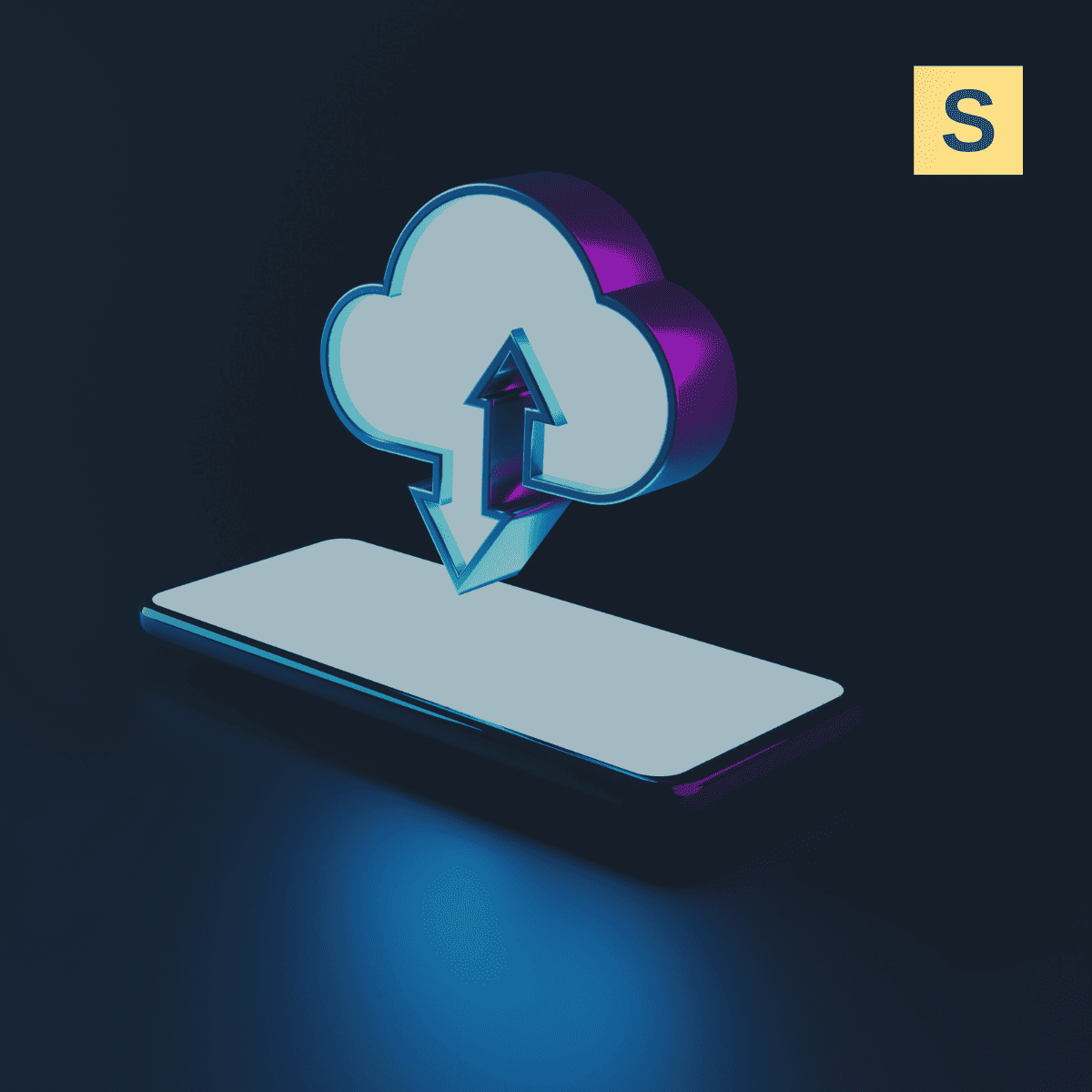According to Forbes, 33.3 million businesses in the U.S. qualify as small businesses. This encompasses 99.9% of all U.S. businesses. The competition is fierce, especially when you’re looking to scale your current software products or explore new digital solutions. This is where knowledge of the latest technology trends for small and medium-sized businesses comes in. This knowledge can give you the clarity and direction you need.
At Seedium, we have been working closely with SMBs across various vertical sectors for more than eight years, and we have come to recognize the unique pressures you’re working under. So, this article covers not only an overview of small business technology trends, but also real examples of their implementation, as well as practical advice.
What are the major technology trends in small businesses in 2026?
The key small business technology trends include AI, cloud computing, and cybersecurity. All of these trends have an extreme impact on shaping the small business landscape.
Adopting Artificial Intelligence (AI)
AI streamlines processes and enhances decision-making. According to a recent Service Direct study, 77% of small businesses have adopted AI in some capacity. The reasons for doing so included:
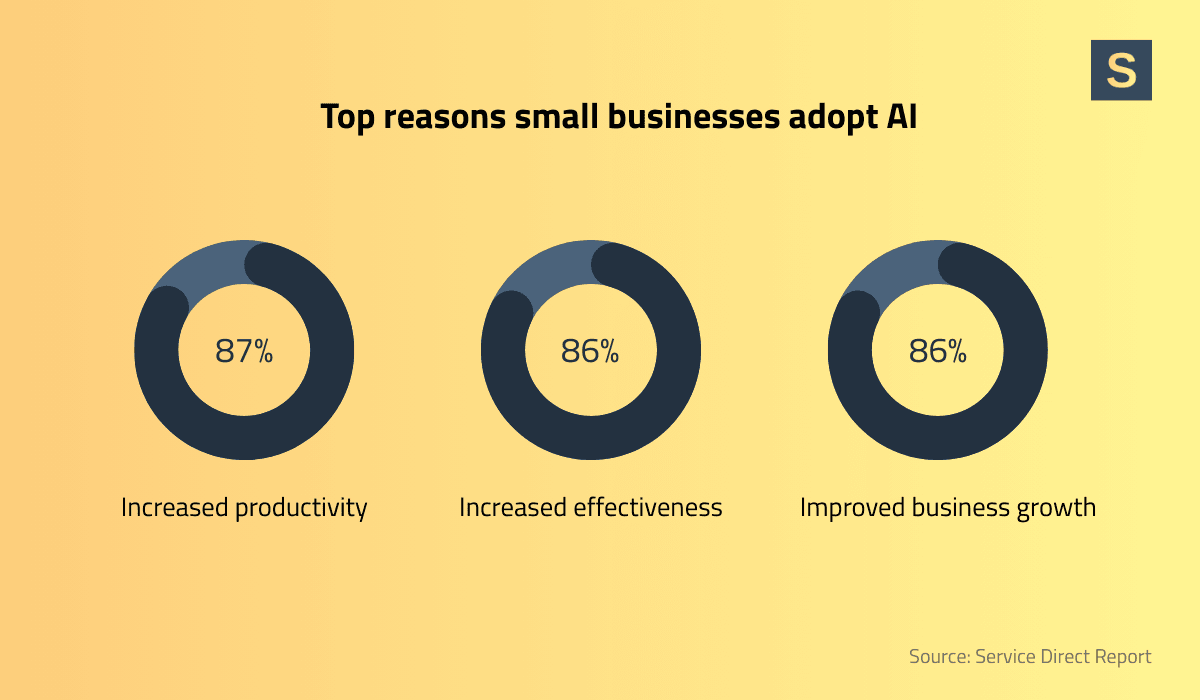
- Increased productivity (87%)
- Increased effectiveness (86%)
- Improved business growth (86%)
Despite this, there are some challenges to adopting AI. These include a lack of understanding of the benefits of AI (62%) and insufficient in-house capabilities (60%).
Growth of Cloud Computing
Cloud computing offers elastic and cost-effective solutions. 42.5% of EU enterprises bought cloud computing services in 2023, mostly for email, file storage, and office software. 63% of SMB workloads and 62% of SMB data are currently stored in the cloud. This SMB technology trend will continue to grow as more businesses realize the benefits of cloud-based services.
Emphasis on Cybersecurity
46% of all cyberattacks happen to businesses with fewer than 1,000 employees. However, the majority of small businesses are vulnerable to cyberattacks; a recent study found that only 14% of small businesses are prepared to protect against them. Implementing stringent cybersecurity practices is necessary to secure sensitive information and maintain customers’ trust.
Trend #1: Enhancing in-house resources through team augmentation
Team augmentation is a flexible staffing model under which businesses hire external experts as an extension of an in-house team. This arrangement allows SMBs to use specialized expertise on a flexible basis. Team augmentation helps align employee abilities with project needs, without taking on long-term permanent staff.
Here are the advantages of team augmentation for SMBs:
1. Access to specialized expertise. Team extension enables SMBs to bridge skill gaps by providing temporary access to a pool of skilled professionals. Access to specialized expertise raises the caliber of project output and boosts productivity. This way, you can execute advanced development work with more confidence.
2. Cost-effectiveness. Staff augmentation is a more affordable option. It allows businesses to hire experienced professionals on an interim basis. Hence, they can avoid many of the costs associated with hiring permanent staff. These include recruitment-related expenses, training, allowances, and overheads.
3. Greater focus on core business activities. By outsourcing technical work to augmented personnel, SMBs free up internal resources to focus on strategic initiatives and core business functions. This fuels overall growth and innovation.
Read also: The Latest Trends in HR Technology
But how can a business properly handle this process? Here are some tips to use team augmentation to your advantage:
- Assess internal requirements. Before beginning team augmentation, assess your existing team’s potential. Identify specific skill gaps and project requirements.
- Choose the right partners. Work with reliable software development providers that have a history of success and can deliver experts with the abilities your projects demand.
- Augment employees smoothly. Ensure that outside experts are smoothly integrated into your current staff. You should provide clear channels of communication, properly defined roles, and access to necessary resources.
- Ensure control and supervision. Though augmented staff bring external expertise to your company, one should still guarantee there is sufficient internal supervision. This is needed to ensure that project objectives and quality standards are attained at all times.
At Seedium, we provide dedicated development team services for companies looking to augment their in-house resources. Our engineers have a proven track record of successful projects, and constantly improve their skills to offer market-leading expertise.
Trend #2: Optimizing operational efficiency with AI solutions
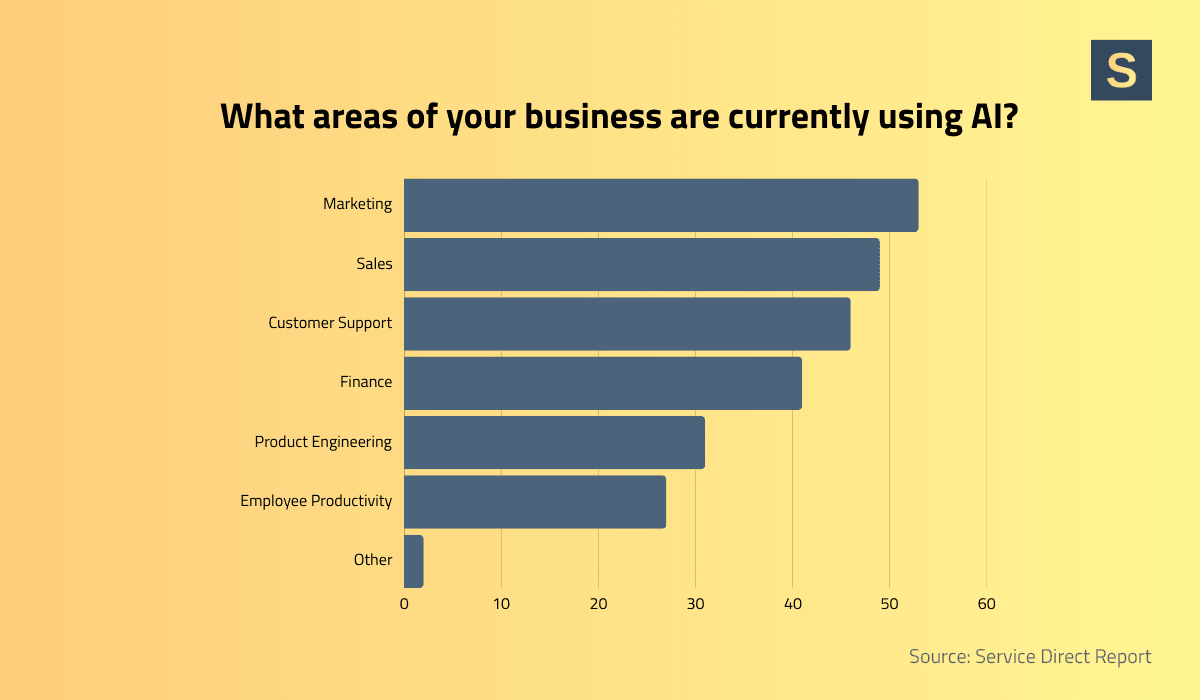
Use of AI is a growing technology trend for small businesses, as it becomes less complicated to access over time. SMBs use AI to maximize operational effectiveness, cut costs, and improve customer experience.
AI makes it easier for SMBs to automate repetitive processes such as data entry, billing, scheduling, and so on. Automation of these processes reduces manual errors and allows the workforce to focus on strategic operations. 90% of SMBs use AI to assist in data integration and process automation. This results in improved efficiency.
AI is also good for tasks related to the hiring process. We helped our client, Supamatch, create such a solution, called AI Ignition. It uses AI algorithms to match candidates with the appropriate jobs. AI Ignition improves the accuracy and effectiveness of talent sourcing by analyzing candidate profiles and job descriptions. It truly demonstrates the capability of AI to revolutionize business processes.
Improving customer service
AI chatbots and virtual assistants offer 24/7 customer service support. This results in increased customer satisfaction, and enables human representatives to tackle more complicated issues. For instance, Amarra, a dress distributor, uses AI chatbots to handle 70% of customer inquiries. This frees up employees to conduct other duties.
Marketing with personalization
AI can analyze customer information to create personalization-driven marketing campaigns and tailored content. These have the potential to drive engagement and conversion. AI-based tools facilitate the creation of effective product descriptions and marketing material that can be easily optimized. However, AI can only be considered a supportive tool for marketing, not a primary one.
Smart inventory management
Smart inventory systems can predict inventory requirements based on historical market trends and data. This helps to reduce overstock and stockouts. Amarra reduced overstocking by 40% using an AI-driven inventory management system.
Considerations for using AI as one of the key technology trends in small business
When building digital products with AI, you must keep the following features in mind:
- Prioritize data quality. You need to tune your AI models with relevant data in order to tailor them to your specific needs. Lack of high-quality data is typically a major barrier to AI adoption. You can overcome this problem through strategic partnerships with research agencies, or by using strategies such as data augmentation or synthetic data generation.
- Keep data privacy in mind. When implementing AI solutions, remember to adhere to responsible AI principles and regulatory compliance (GDPR, CCPA, etc.) to avoid data privacy issues. A good strategy is to restrict access to sensitive data. Use techniques such as anonymization and encryption before inputting your data into your AI models.
- Opt for transparency. To increase user trust, AI developers are moving away from “black box” practices, and are making AI models more understandable to users. AI transparency will help your users better understand the output of the AI models, by giving them access to additional information about the data and methodologies used.
- Avoid data bias. Make sure to use the correct models for the type of data you have, perform post-hoc analysis to test the quality of your models, etc.
Trend #3: Enabling scalability through cloud technologies
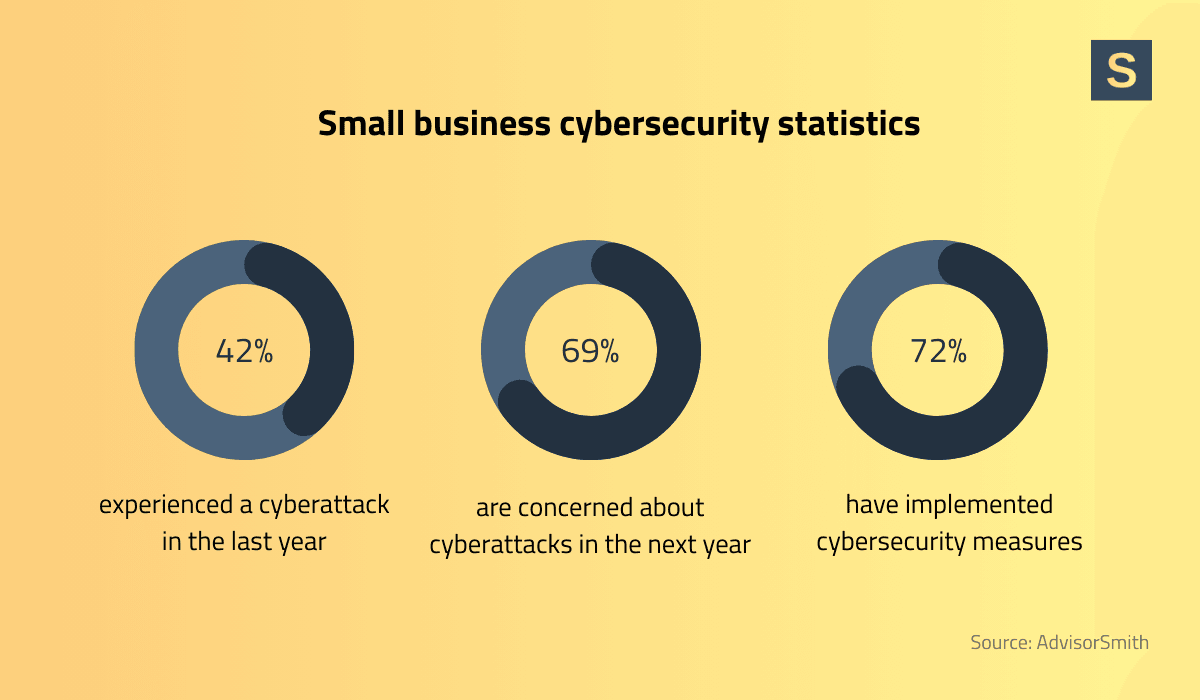
SMBs employ cloud technologies to grow their products and services at low costs. Cloud technologies became a growing trend adopted by SMBs due to their increased accessibility over time. Cloud computing offers an elastic, low-cost, and scalable infrastructure to support business growth, without requiring businesses to invest in massive amounts of physical hardware.
So, what are the advantages of cloud technologies? Here they are:
- Cost-effectiveness. The cost-effectiveness of the cloud is perhaps the most important factor helping it achieve this year's small business technology trends. Cloud solutions use a pay-as-you-go model; SMBs pay only for the resources they utilize. This approach minimizes capital expenditures, and keeps operational expenses in line with real business demands.
- Agility and flexibility. Cloud platforms provide flexibility, allowing SMBs to quickly adjust to changing market demands. SMBs easily host new services and apps, facilitating quicker time-to-market and better responsiveness to customers.
- Improved collaboration and accessibility. When data and software are in the cloud, personnel can access data from any location with internet access. This access improves collaboration, especially in the case of geographically distant or dispersed staff.
- Improved security and disaster recovery. Properly managed cloud suppliers have additional security measures in place, including encryption and regular data backups. Such measures ensure sensitive data protection and business continuity during unforeseen disasters.
Interesting fact: In 2023, 47% of SMB respondents indicated that they were already using AWS CloudFormation templates.
Best practices for SMBs using cloud technologies
Implementing cloud technologies for your SMB can be a bit complicated. Here is a roadmap that can guide you:
- Evaluate business requirements. Prior to cloud migration, analyze your existing IT infrastructure and determine specific areas where cloud solutions can provide value.
- Select the proper service model. Familiarize yourself with various cloud service models. They include Infrastructure as a Service (IaaS), Platform as a Service (PaaS), and Software as a Service (SaaS). Choose the one that best suits your business goals.
- Implement strong security policies. While cloud providers offer their own security features, it’s essential to also establish internal policies for data access and encryption, as well as regular audits.
- Plan for scalability. Design your cloud architecture with scalability in mind. The resources must be adjusted seamlessly as your business grows.
- Train employees. Provide employees with training on how to effectively use cloud tools and adopt best practices in security and data management.
Interesting fact: According to the U.S. Small Business Administration, e-commerce currently accounts for a fifth of all worldwide retail sales, with projections for growth to 22.6% by 2027.
How do SMBs actually use cloud technologies as one of the technology trends in small business? Here’s an example: an online retailer with seasonal spikes in traffic can use cloud services to automatically scale resources during peak seasons. This way, the business can deliver an uninterrupted customer experience without overprovisioning resources during off seasons.
Trend #4: Improving customer experience using data analytics
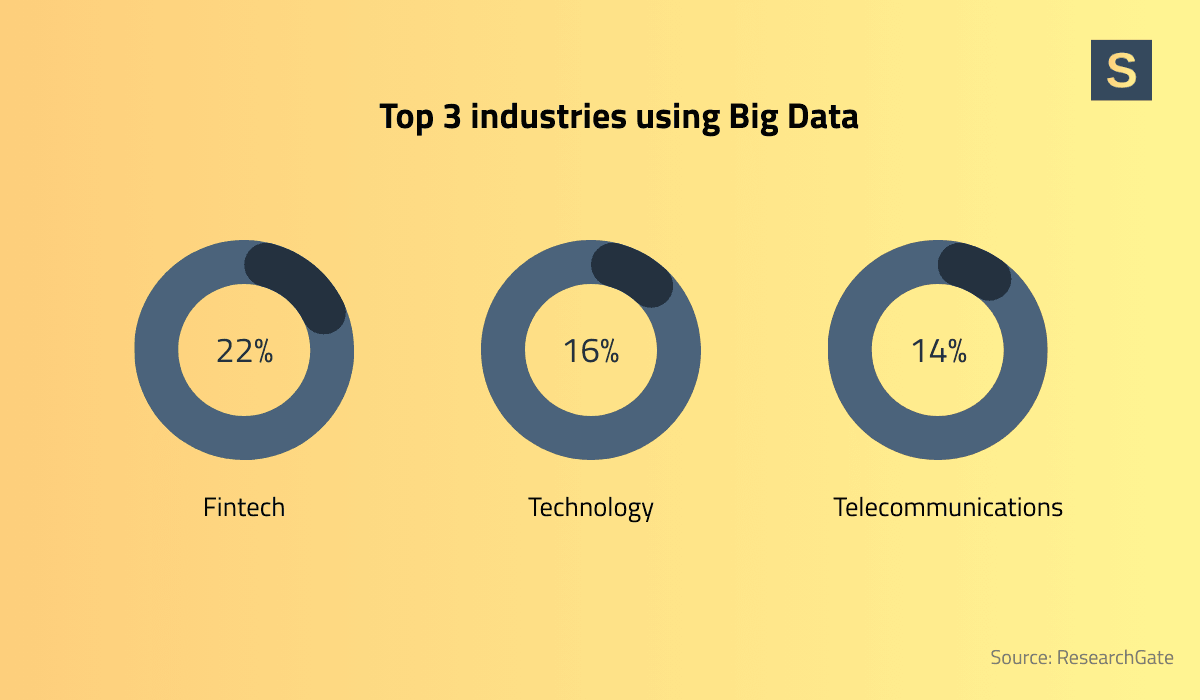
Cloud technologies entered the list of small business tech trends because of the enormous amounts of digital data that exist today. If used properly, data analytics helps to:
- Improve customer experiences
- Drive satisfaction
- Foster loyalty
By analyzing customer data, businesses gain insights into customer behaviors and preferences, and can tailor their offerings more effectively.
Challenges in implementing data analytics for customer experience
The top four challenges that you should consider when implementing data analytics include:
- Data integration and silos. Customer data often resides in disparate systems across various channels. This is why you should develop mechanisms to consolidate your data and gain a unified view of the customer journey.
- Data quality issues. Inaccurate or incomplete data leads to misleading insights. As a result, analytics are only as effective as the quality of the data used.
- Resource constraints. Many SMBs lack the necessary resources for proper data analytics, such as skilled personnel and advanced analytical tools.
At Seedium, we can help you overcome these challenges. Our team has helped many SMBs improve the quality of their data analytics, and we can do the same for you.
Trend #5: Focusing on cybersecurity improvements

Recent studies indicate that approximately 31% of SMBs have been victims of cyberattacks in the form of ransomware, phishing, or data breaches. These attacks can be financially devastating; costs of a cyberattack on an SMB average $250,000, but can be as high as $7 million. Alarmingly, nearly one in five SMBs indicate that a successful cyberattack will force them to close down. So, it's no surprise that increased attention to security mechanisms is prominent in recent small business technology trends.
Here are some common cybersecurity challenges confronting SMBs:
- Limited resources. The majority of SMBs operate on a limited budget, and they usually lack dedicated IT security personnel.
- Evolutionary threats. Threats in cyberspace are evolving, with attackers employing advanced techniques that are capable of evading typical security controls.
- Employee training. The majority of security breaches result from human error, including falling victim to phishing or using weak passwords.
Cybersecurity is especially important for SaaS development, and we keep this in mind when we work with our clients.
For example, when working with Smarter Contact, improving security was one of our top priorities. We applied the best cybersecurity practices, including end-to-end data encryption, continuous security audits, and strong access controls. All of these measures protect user data and maintain customer trust.
How Seedium can support your small and medium business growth
With over eight years in the industry, Seedium is a well-established software development partner to small and medium-sized businesses across various sectors. We provide tailored digital solutions for SMB digital transformation, expansion, and innovation.

End-to-End Development Services
We offer an end-to-end range of services, including:
- Web and mobile application development
- Data science and AI integration
- DevOps and cloud solutions
- UI/UX development and quality testing
Regardless of whether you are creating a new product from scratch, or perfecting an existing one, Seedium can guide your whole development process. Or, if you want to spearhead the development process yourself, we can augment your internal staff with qualified developers.
SMB-Focused Technology Solutions
We stay at the edge of current IT trends for small and medium-sized businesses, including:
- Team augmentation to strengthen your internal skills
- AI-powered solutions for the efficiency of operations
- Cloud infrastructure for scalability
- Data analysis to improve customer experience
- Security-first development to ensure robust digital protection
From a product’s launch to its expansion, we work hand-in-hand with your team to deliver solutions that yield concrete outcomes. We provide dedicated development teams, digital transformation, and end-to-end development services.
Feel free to check out our software development services for SMBs.
Have a project in mind? Let’s discuss it.



